
So far as I’m concerned, there is only one bridge in NYC that matters. Only one bridge worth climbing. Only one bridge shrouded in more ghost stories and urban legends than you could fit into a 200 page issue of Weird NJ. Entire movies have been written about this bridge. Hell Gate Bridge. This is its story.
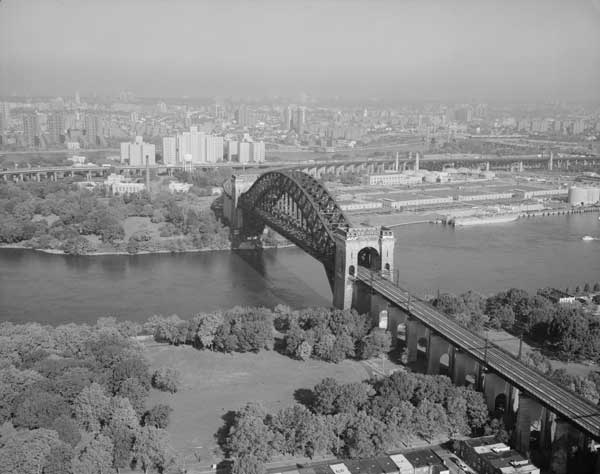
Photo by Jet Lowe [Public domain, via wikipedia]
Structure and History:
Hell Gate Bridge(or “Hell’s Gate” – as it is also called by some) is a massive structure, connecting Queens to the Bronx, passing over wards/randalls island along the way. The length of the approach viaducts and main span equals 3.2 miles of steel suspended on average 10 stories above the ground. Construction began on it in 1914 and was completed by 1916. When opened, it was the longest steel arch bridge in the world (it is currently #17 on that list). The main span which crosses the east river is 1017 feet, 6 inches long. A 350 foot section which crosses the Bronx kill was originally designed to be a lift drawbridge, but this waterway was eventually narrowed with fill and not a viable shipping lane. It contains 3 tracks – 2 for Amtrak use and 1 for freight trains (a 4th, northernmost freight track was removed in the early 1980s)
When opened, it was the longest steel arch bridge in the world.
The viaduct approach to the main span is held up by concrete piers. The original plan called for using steel piers, but concern over the prospect of inmates at the mental institution on wards island (which the bridge passes above) climbing the piers to escape over the bridge aided in the decision to change this plan.
Hell gate bridge was constructed with the sole purpose of connecting the Pennsylvania and New Haven railways, creating direct passenger rail service from New York to Boston. It also provided a direct route for freight to enter NYC and Long Island. Prior to this, most rail freight in NYC moved across the rivers on barges. The opening of Hell Gate created the first and only non-barge freight rail link to Long Island.

Conrail freight crossing Hell Gate Bridge in the early 1990s
Railroad Operations & Recent History:
Over the decades, the introduction of the automobile diminished passenger traffic on the railroads to a point where in the early 1970’s the federal government took over responsibility for passenger trains with the creation of Amtrak. Around the same time, the Pennsylvania railroad merged with the New York Central, and was forced by the government to take in the bankrupt New Haven as well, thus creating the Penn Central railway, which soon too went bankrupt and gave way to still another government sponsored railway: Conrail. Unlike Amtrak, Conrail eventually turned a profit and was sold to CSX and Norfolk Southern.
During the Conrail and Penn Central years, freight traffic over the Hell Gate Bridge dropped like a brick. Eventually, the northern most track on the bridge was ripped out for lack of use. While Amtrak was maintaining a schedule of perhaps 14 passenger trains a day, Conrail was down to one round trip from the Bronx to Long Island. Even this was cut from a 7 day per week operation to 5 during the early and mid 1990’s. It didn’t help that the Long Island Rail Road, primarily a commuter railway, was still operating all the freight on long island and had little interest in keeping customers. Thus the base of traffic eroded still further…
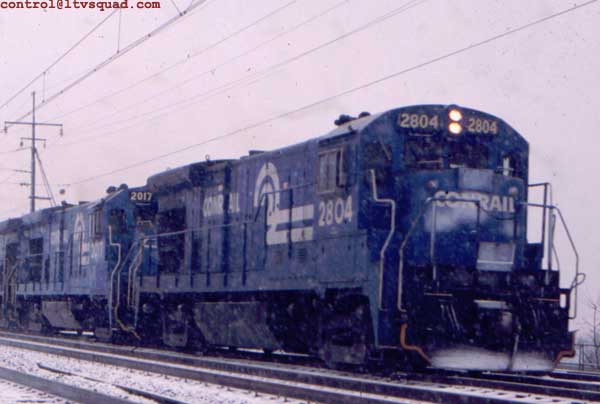
Early 1990s – hopped this freight off the viaduct while walking back from an early winter morning trip up to the main span
In the mid 1990s though, traffic began to pick up. Amtrak introduced ‘Acela’ service, increasing the number of trains operating over the bridge. As part of the deal for CSX to buy half of Conrail, they had to grant the Canadian Pacific railway the right to use the freight track over the bridge and onto Long Island. Before Conrail was bought, they agreed to let another carrier, Providence and Worcester, haul long trains of rock over the line. The LIRR finally got smart and farmed out its freight operations to a for-profit ‘shortline’ railway known as the New York and Atlantic. The result of all these changes has been a large increase in freight traffic. Where there was once only a short weekday-only haul, there is now a regular weekday morning CSX freight, averaging anywhere from 50 to 100 cars. Canadian Pacific eventually entered a deal with CSX for them to haul their cars (their trains were shorter, 10-40 cars 3 times a week on a good week). P&W’s one or two trips per week with 40-50 freight cars has turned into 3 trips per week with 80-100 cars. For a short while the MTA also used the bridge on certain nights to bring Metro North M7 cars to a shop in LIC, via a train of LIRR engines and LIRR & Amtrak staff.

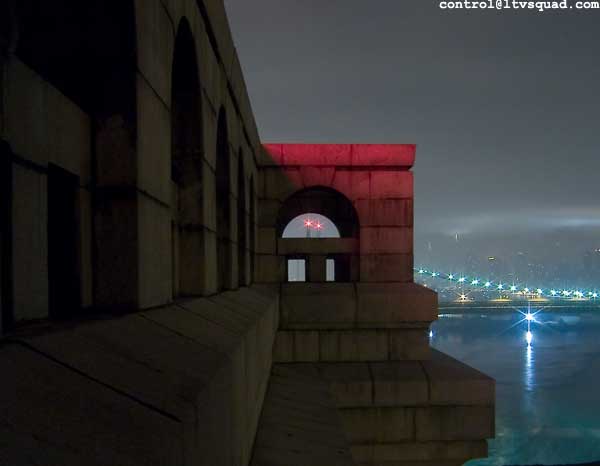
Late night trip to the top, early 2000s
The lean years: 1980s and early 90s
All of the above flip flopping in ownership and rights of use of the bridge, combined with years of neglect as Pennsy and the New Haven went bankrupt, created a dilemma in the later 80’s and 1990’s. The bridge had not been seriously maintained or painted since it was built! Rocks were beginning to fall off of the bridge, damaging houses and cars parked below. With ownership having changed so many times, and the cost of maintenance as high as it is, Conrail & Amtrak pointed the figure at each other as being the party that should pay for the work, likely wrangling and dragging the situation out in court, This lead to then NY state Senator Daniel Patrick Moynihan to finally give in and get $55 million dollars out of the federal government to paint and spruce up the bridge. Work began in 1994, and was completed in 1996. This cleaning and painting work has taken away much of the menacing look the bridge eventually gained in the 1970s – coated in old school graffiti, with it’s towers darkened by decades of dirt and grime. It didn’t even have the 3 red warning beacons on top of it to make it visible to aircraft. It outright looked like the sinister gates to hell, and there certainly were enough urban legends to add to that feel.
It outright looked like the sinister gates to hell, and there certainly were enough urban legends to add to that feel.
Slowly though, Graffiti has come back. JA has long dominated the Randall’s island towers facing the toll booths on the Triboro bridge. Jaf and PK reclaimed the Astoria tower with large block letters across the top like they had in the early 1990s.
Local Lore, urban legends, and a Will To Explore:
Growing up not far from the bridge in the 1970s, it was impossible to not hear the ghost stories and urban legends – the tales of kids going up there, seeing lights of trains that just never seemed to come, and when they did, they were filled with the lost souls of flaming General Slocum passengers, 1000+ of whom who died in the waters below – or of the Spanish and Dutch explorers whose boats legend has it sank in the turbulent whirlpooling currents. It is here that Long Island Sound, as well as the East and Harlem rivers converge – making for currents that have claimed many a live and made the location an ideal dumping ground for victims of the Mafia over the decades. An occasional skull or bone has been known to wash ashore…


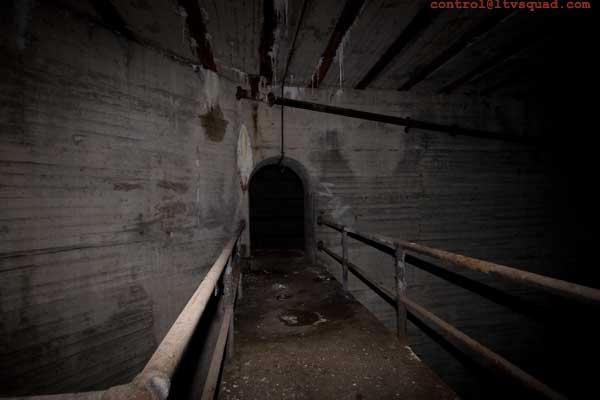
Inside the bridge towers
And while not drowning in the water below the bridge or being chased by demons on the bridge span itself, there were legends of a child molesting homeless rapist, who would grab kids in the park and drag them into the massive chamber in the base of the bridge blindfolded. According to legend, when the police finally figured out where he was dragging the kids to and stormed the place, they found space in the base of the bridge covered wall to wall of photos of said kids being raped. The sickly smell sent investigators out to the park to throw up in the nearest trash can.
I later looked up some of these stories in news archives and couldn’t find anything verify them – thus the ‘urban legend’ label. Back before the internet kids would make up all sorts of stories without fear of being disproved.


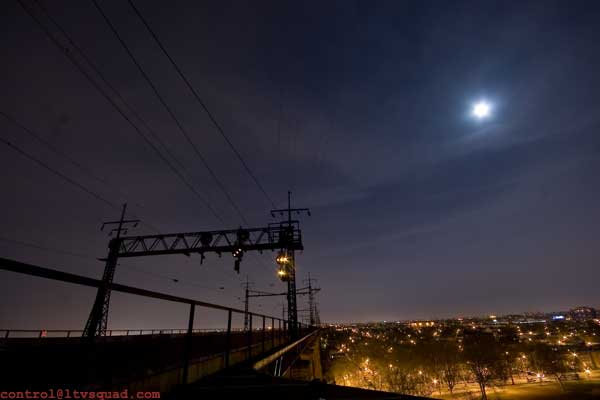



With stories like these and no instant-access to prove or disprove, the stories just built up a challenge. if you were growing up in the area at the time, and didn’t have the balls to go up on the bridge, you just were not one of the cool kids.. NYC was a rough city back then, and not being a wimp wasn’t just a measuring stick on if your classmates would harass you – it was a means of survival.
It is important to note here that no other bridge in NYC that I know of shares this same near mythological status of story telling. The neighboring Triboro bridge, infinity better known as thousands of cars per day cross it, never attracted the allure that Hell Gate Bridge did. Neither did the Queensboro bridge further south on the river… These bridges were transparent. Anyone could get in a car and ride over them. Anyone could ride a bike or walk over them. Hell Gate Bridge offers no auto lanes, no subway tracks. No access to foot traffic. Just freight trains and Amtrak. The fact that throughout the 70s and 80s it was a rusting, dirty, decaying bridge – combined with the urban legends and lack of easy access – created the ultimate neighborhood challenge and mythology. It became the benchmark of danger and endurance. Could you climb the bridge? Did you have the balls to go up there?
The bridge was a rite of passage. From boy to teen, as it was for many who grew up in it’s shadow. For me, it was one of the very first places explored, and a constant subject of my shutter whenever I was nearby with a camera in hand.
When I see Hell Gate Bridge, I know where I am. Home.
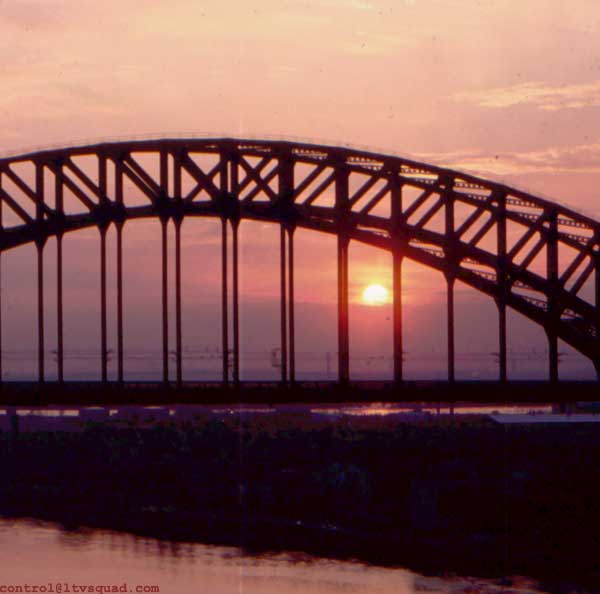
Hell Gate Bridge at dawn, July 1990
Updated Feb 2016 – minor tweaks for clarity.
Nice article…I grew up in Astoria, not far from the bridge
Always wanted to climb it, still do in fact
Great pictures, now at least I know what the inside of the abutments look like
Thanks
I just recently moved to Astoria and this bridge was one of the first places I went to visit. I’ve been a big fan of LTV squad for about a decade now. It’s the coolest urban exploring site on the internet! It makes me really proud to know I’m living near Control’s old stomping grounds.
In 1974 myself and a. Few others climbed the bridge regulary from street level climbed up a pipe from street level to the first beam which was the steepest we walked up the beams to track level, wearing goog sneakers, forget walking the track I climbed the beams the way to climb the beams was putting you sneakers on the rivits and hand anlway flat on the rivits above your head .lol it was wild, a few of us are no longer alive ,the no access to the first beam it blocked of and the pipe to get to the base of the beam is removed, our names have been removed when the bridge was cleaned, it was some rush scaling those iron beams with no rails, we were the climbers, from the 70s
I hit the bridge w friends, camera in hand, and it was a legendary night as we got there at sunset. However the tower doors were double chained and kept tight by huge locks, were they just not there when you went, is there a way around? I was disappointed that we weren’t able to go up.
.
Nice piece Control!
hey Tom K…hello from a Hell’s Gate climber in the 60’s…I was in a gang called “riverside” we always wondered about “the parkside gents” who’s name was written high and proud on the granite from the 50’s probably. We got to the first bottom beam by way of a nice thick rope tied onto the beam (someone before us left) that allowed you to get across the 45 degree slanted granite that the arch steel abuts on….then we climbed as you described. I remember the granite and the steel was kind of “greasy” your sneakers would not grip it totally….and there were wind gusts….it was a very scary right of passage. I also climbed up inside the Triboro bridge tower…all the way to the light lanterns on the tippy top ….our candles burned out and we had to descend 100’s of feet, by feel and touch in the dark….talkng to each other, keeping our spirits up, we were scared/ could see nothing, but knew the abyss was below us that would mean certain death of one of us slipped. It was like a military mission…we were about 13 or 14 years old, growing balls.
Anthony A.
In the mid 70’s there were 8-10 of us from Astoria that climbed the beams on the Hell’s Gate, from street level to the track level. We climbed that bridge almost on a daily basis and explored every inch of that beautiful beast. On one occasion when I reached the top, an owl with an appropriate 6 foot wing span flew passed my head. That owl must have been feeding on the rats by the river. I was paid to write everyone’s names on the top arch. I often think and get a chill, when I realize how lucky we were that no one fell from that height, with only the rocks at the river’s edge to break our fall.